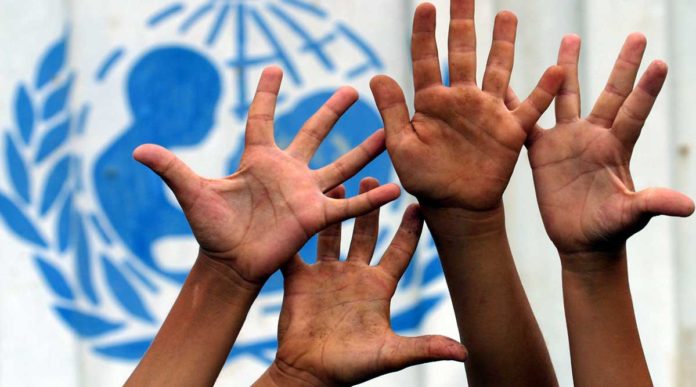
Today, we celebrate World Children’s Day, which highlights the adoption of the Convention on the Rights of the Child by the United Nations. This day offers a unique opportunity to promote and celebrate the rights of the child. It is also the opportunity to advocate for a world in which every girl and boy can go to school, access quality care and services, express themselves and be heard and grow and thrive without violence and exploitation. Discover the action of the IBCR and its partners in nearly 40 countries, including Québec and Canada, to promote and enforce these rights.
Strengthening the Informal Economy in the Fight against Sexual Exploitation of Children in Travel and Tourism – A Case from Costa Rica
In early June 2018, the International Summit on Child Protection in Travel and Tourism held in Bogota, Colombia offered an occasion to take stock of the impact of various strategies to prevent the exploitation of children. During the International Summit, various large players of the global travel scene, including hotel chains, tour operators, airline companies and national tourism boards, presented their experience in promoting actions within their business and supply chains to prevent and address the exploitation of children.
It is highly laudable that most large actors within the travel and tourism industry have begun to take their responsibility to protect children in their premises and services and are implementing the Code of Conduct for the Protection of Children from Sexual Exploitation. Yet, despite these efforts, the pressing question remains: Why is there a sharp increase in the number of children being sexually exploited in the context of travel and tourism?
Changing Nature of Tourism
One of the most interesting features of the travel and tourism industry is its innovative and changing nature. The way travellers move around the world today is different from 20 – or even 5 – years ago. Even the arrival of brokers such as “Airbnb” seems already a well-established “mainstream” industry rather than a new trend in the sector. The Global Study on Sexual Exploitation of Children in Travel and Tourism sheds light on the fact that more and more travellers, including potential offenders, may use one-to-one accommodation booking systems, select more and more remote locations and use grassroot services for their travels rather than then larger brands and venues. Emerging forms of travels, including voluntourism, eco-stays and home-stays, are made possible with the continued expansion of information and communication technologies, allowing for new approaches when arranging travels and accommodation, while directly and anonymously liaising with potential victims.
With such evolutions in travel and tourism, the sexual exploitation of children occurs in more diverse locations, including zero-star guesthouses, local neighbourhoods, massage parlours, and centres where volunteers are deployed in direct contact with children. It became even more obvious that broader community-approaches are necessary. A critical category of actors in the action against the commercial sexual exploitation of children in the travel and tourism industry resides in the small-scale, often informal sector.
Experiences in the Training of the Informal Sector
In Costa Rica, the International Bureau for Children’s Rights, together with its national partner Fundación Paniamor (ECPAT Costa Rica), has initiated an innovative project reaching out to such informal actors, including taxi drivers, canteen operators, local groups of surfers, self-made guides or sellers at local markets and beaches that attract tourists. Through the project we gained many insights in how to address the informal sector effectively. Our first approach was very conventional: we produced training materials and organized workshops for the informal sector to be sensitized to this reality. But these approaches were largely unsuccessful. We failed to recognize that some of these actors were formally uneducated and illiterate; they were therefore reluctant to be caught in a situation where a lot of documents would be provided to them. Also, it was unrealistic to expect those who earn their living by being present on the spot where tourists are located every day would leave their place of revenue to attend “formal” workshops. Last but not least, many of these entrepreneurs operate with some form of irregularities, often without permits, and not always declaring their revenues to the authorities. Hence, they were afraid to attract attention or to be publicly recognized as gaining some revenues in non-formal ways.
Involving Young People as Multipliers
In a second wave of action, we diverted our energies to work with association of young people from the communities and neighbourhoods and train them as multipliers. With these young people, we were able to approach these informal workers on site, during the times of the day, that suits them most: Taxi drivers during mid-day, when they were less busy, canteen operators after lunch and before dinner, and beach vendors at sunset, when most tourists already returned to their hotels. Hence, subgroups needed a targeted approach.
The idea was to create three sessions of about 20 minutes each. Each session revolved around a maximum of three key messages. The young multipliers returned regularly and kept track that all persons received all three training sessions. The workers appreciated the fact that the interventions were made by young people from their community, that they cared enough to meet them on their working spot, that the young people were well trained and persistent. They also liked the fact that the sessions were accessible, free of charge, simple and concrete. Beside the traders and taxi drivers, we identified local surfers as important target groups. Local surfers are rarely addressed by programs and often overseen. This activity allowed them to see themselves as valued actors of change in their community. On their own, they brought the messages and materials to other surfer associations and groups in other touristic areas.
Engaging the informal sector requires creative and adaptive approaches in order to truly install a lasting change. Such practices offer promising avenues to engage the travel and tourism industry from a much closer point of view to where abuse and exploitation is taking place. It is time to expand the perspective.
Strengthening Holistic Multi-Stakeholder Approaches
It remains however that the informal economy itself is only one part of the concerted action required to effectively mobilize all powers in the fight against the sexual exploitation of children. We need holistic approaches, which increase the trust and co-operation between all stakeholders: How can we ask sellers on the beach to report suspicious cases to the police if the latter is corrupt? How can we ask taxi drivers to contact a hotline if it has the reputation to fail to maintain confidentiality? How can we convince families who host tourists if it seems to threaten the only source of revenues they have?
Clearly, corporate social responsibility towards children in the travel and tourism industry is a pivotal area of action that needs to be strongly connected within the larger mission of strengthening the overall child protection system. Without it, isolate action with the private sector provide a nice façade for promotion purpose, without achieving the lasting goal of protecting children against all forms of commercial sexual exploitation.
Guillaume Landry, Director General of the International Bureau for Children’s Rights.



